httpv://www.youtube.com/watch?v=qQO2LGyFhpA
video: Srila Prabhupada – Gauranga Bolite Habe
By Yashodananda Das
The direct disciple of Srila Krishnadasa Kaviraja Gosvami was Srila Narottama dasa Thakura, who accepted Srila Visvanatha Cakravarti as his servitor. Srila Visvanatha Cakravarti Thakura accepted Srila Jagannatha dasa Babaji, who initiated Srila Bhaktivinoda Thakura, who in turn initiated Srila Gaurakisora dasa Babaji, the spiritual master of Om Vishnupada Srila Bhaktisiddhanta Sarasvati Gosvami Maharaja, the divine master of our humble self.
Since we belong to this chain of disciplic succession from Sri Caitanya Mahaprabhu, this edition of Sri Caitanya-caritamrta will contain nothing newly manufactured by our tiny brains, but only remnants of food originally eaten by the Lord Himself.
Lord Sri Caitanya Mahaprabhu does not belong to the mundane plane of the three qualitative modes. He belongs to the transcendental plane beyond the reach of the imperfect sense perception of a living being. Even the most erudite mundane scholar cannot approach the transcendental plane unless he submits himself to transcendental sound with a receptive mood, for in that mood only can one realize the message of Sri Caitanya Mahaprabhu. What will be described herein, therefore, has nothing to do with the experimental thoughts created by the speculative habits of inert minds.
The subject matter of this book is not a mental concoction but a factual spiritual experience that one can realize only by accepting the line of disciplic succession described above. Any deviation from that line will bewilder the reader’s understanding of the mystery of Sri Caitanya-caritamrta, which is a transcendental literature meant for the postgraduate study of one who has realized all the Vedic scriptures such as the Upanisads and Vedanta-sutra and their natural commentaries such as Srimad-Bhagavatam and the Bhagavad-gita.
Books : Sri Caitanya-caritamrta – 1975 Edition : Cc. Introduction :
Books : Sri Caitanya-caritamrta – 1975 Edition : Cc. Adi-lila : Adi 5: The Glories of Lord Nityananda Balarama : Adi 5.20 : PURPORT :
Srila Narottama dasa Thakura, a great acarya in the preceptorial line of Lord Sri Caitanya Mahaprabhu, has said for our benefit that one can perfectly see the dhamas only when one completely gives up the mentality of lording it over material nature. One’s spiritual vision develops proportionately to one’s giving up the debased mentality of unnecessarily enjoying matter.
A diseased person who has become diseased because of a certain bad habit must be ready to follow the advice of the physician, and as a natural sequence he must attempt to give up the cause of the disease. The patient cannot indulge in the bad habit and at the same time expect to be cured by the physician. Modern material civilization, however, is maintaining a diseased atmosphere. The living being is a spiritual spark, as spiritual as the Lord Himself.
The only difference is that the Lord is great and the living being is small. Qualitatively they are one, but quantitatively they are different. Therefore, since the living being is spiritual in constitution, he can be happy only in the spiritual sky, where there are unlimited spiritual spheres called Vaikunthas. A spiritual being conditioned by a material body must therefore try to get rid of his disease instead of developing the cause of the disease.
Books : Sri Caitanya-caritamrta – 1975 Edition : Cc. Adi-lila : Adi 5: The Glories of Lord Nityananda Balarama : Adi 5.204 : PURPORT :
Srila Narottama dasa Thakura, who is famous for his poetic composition known as Prarthana, has lamented in one of his prayers, “When will Lord Nityananda be merciful upon me so that I will forget all material desires?”
Srila Narottama dasa Thakura confirms that unless one is freed from material desires to satisfy the needs of the body and senses, one cannot understand the transcendental abode of Lord Krishna, Vrindavana. He also confirms that one cannot understand the loving affairs of Radha and Krishna without going through the direction of the six Gosvamis. In another verse Narottama dasa Thakura has stated that without the causeless mercy of Nityananda Prabhu, one cannot enter into the affairs of Radha and Krishna.
Books : Sri Caitanya-caritamrta – 1975 Edition : Cc. Adi-lila : Adi 7: Lord Caitanya in Five Features : Adi 7.17 : PURPORT In connection with verses sixteen and seventeen, Sri Bhaktisiddhanta Sarasvati Thakura explains in his Anubhasya: “There are specific symptoms by which the internal devotees and the unalloyed or pure devotees are to be known. All unalloyed devotees are sakti-tattvas, or potencies of the Lord.
Some of them are situated in conjugal love and others in filial affection, fraternity and servitude. Certainly all of them are devotees, but by making a comparative study it is found that the devotees or potencies who are engaged in conjugal love are better situated than the others. Thus devotees who are in a relationship with the Supreme Personality of Godhead in conjugal love are considered to be the most confidential devotees of Lord Sri Caitanya Mahaprabhu. Those who engage in the service of Lord Nityananda Prabhu and Lord Advaita Prabhu generally have relationships of parental love, fraternity, servitude and neutrality. When such devotees develop great attachment for Sri Caitanya Mahaprabhu, they too become situated within the intimate circle of devotees in conjugal love.” This gradual development of devotional service is described by Sri Narottama dasa Thakura as follows:
gauranga balite habe pulaka sarira
hari hari balite nayane ba’be nira
ara kabe nitaicanda karuna karibe
samsara-vasana mora kabe tuccha habe
visaya chadiya kabe suddha habe mana
kabe hama heraba sri-vrindavana
rupa-raghunatha-pade ha-ibe akuti
kabe hama bujhaba sri-yugala-piriti
“When will there be eruptions on my body as soon as I chant the name of Lord Caitanya, and when will there be incessant torrents of tears as soon as I chant the holy names Hare Krishna? When will Lord Nityananda be merciful toward me and free me from all desires for material enjoyment? When will my mind be completely freed from all contamination of desires for material pleasure?
Only at that time will it be possible for me to understand Vrindavana. Only if I become attached to the instructions given by the six Gosvamis, headed by Rupa Gosvami and Raghunatha dasa Gosvami, will it be possible for me to understand the conjugal love of Radha and Krishna.” By attachment to the devotional service of Lord CaitanyaMahaprabhu one immediately comes to the ecstatic position. When he develops his love for Nityananda Prabhu he is freed from all attachment to the material world, and at that time he becomes eligible to understand the Lord’s pastimes in Vrindavana.
In that condition, when one develops his love for the six Gosvamis, he can understand the conjugal love between Radha and Krishna. These are the different stages of a pure devotee’s promotion to conjugal love in the service of Radha and Krishna in an intimate relationship with Sri CaitanyaMahaprabhu
Cc. Adi-lila : Adi 7: Lord Caitanya in Five Features : Adi 7.74 The principles of the parampara system were strictly honored in previous ages-Satya-yuga, Treta-yuga and Dvapara-yuga-but in the present age, Kali-yuga, people neglect the importance of this system of srauta-parampara, or receiving knowledge by disciplic succession. In this age, people are prepared to argue that they can understand that which is beyond their limited knowledge and perception through so-called scientific observations and experiments, not knowing that actual truth comes down to man from authorities.
This argumentative attitude is against the Vedic principles, and it is very difficult for one who adopts it to understand that the holy name of Krishna is as good as Krishna Himself. Since Krishna and His holy name are identical, the holy name is eternally pure and beyond material contamination. It is the Supreme Personality of Godhead as a transcendental vibration. The holy name is completely different from material sound, as confirmed by Narottama dasa Thakura: golokera prema-dhana, hari-nama-sankirtana. The transcendental vibration of hari-nama-sankirtana is imported from the spiritual world. Thus although materialists who are addicted to experimental knowledge and the so-called “scientific method” cannot place their faith in the chanting of the Hare Krishna maha-mantra, it is a fact that simply by chanting the Hare Krishna mantra offenselessly one can be freed from all subtle and gross material conditions.
The spiritual world is called Vaikuntha, which means “without anxiety.” In the material world everything is full of anxiety (kuntha), whereas in the spiritual world (Vaikuntha) everything is free from anxiety. Therefore those who are afflicted by a combination of anxieties cannot understand the Hare Krishna mantra, which is free from all anxiety.
In the present age the vibration of the Hare Krishna maha-mantra is the only process that is in a transcendental position, beyond material contamination. Since the holy name can deliver a conditioned soul, it is explained here to be sarva-mantra-sara, the essence of all Vedic hymns.
Books : Sri Caitanya-caritamrta – 1975 Edition : Cc. Adi-lila : Adi 11: The Expansions of Lord Nityananda : Adi 11.32 : The village of Mahesa Pandita, which is known as Palapada, is situated in the district of Nadia within a forest about one mile south of the Cakadaha railway station. The Ganges flows nearby. It is said that formerly Mahesa Pandita lived on the eastern side of Jirat in the village known as Masipura or Yasipura, and when Masipura merged into the riverbed of the Ganges, the Deities there were brought to Palapada, wh ich is situated in the midst of various villages such as Beledanga, Berigrama, Sukhasagara, Candude and Manasapota. (There are about fourteen villages, and the entire neighborhood is known as Pancanagara Paragana.)
It is mentioned that Mahesa Pandita joined the festival performed by Sri Nityananda Prabhu at Panihati. Narottama dasa Thakura also joined in the festival, and Mahesa Pandita saw him on that occasion. In the temple of Mahesa Pandita there are Deities of Gaura-Nityananda, Sri Gopinatha, Sri Madana-mohana and Radha-Govinda, as well as a salagrama-sila.
Books : Sri Caitanya-caritamrta – 1975 Edition : Cc. Adi-lila : Adi 12: The Expansions of Advaita Acarya and Gadadhara Pandita : Adi 12.88The Gaura-ganoddesa-dipika, verse 183, mentions that Sivananda Cakravarti was formerly Lavanga-manjari. The Sakha-nirnaya, written by Yadunandana dasa, also names other branches of Gadadhara Pandita, as follows: (1) Madhava Acarya, (2) Gopala dasa, (3) Hrdayananda, (4) Vallabha Bhatta (the Vallabha-sampradaya, or Pustimarga-sampradaya, is very famous), (5) Madhu Pandita (this famous devotee lived near Khadadaha in the village known as Sanibona-grama, about two miles east of the Khadadaha station, and constructed the temple of Gopinathaji in Vrindavana), (6) Acyutananda, (7) Candrasekhara, (8) Vakresvara Pandita, (9) Damodara, (10) Bhagavan Acarya, (11) Ananta Acaryavarya, (12) Krishnadasa, (13) Paramananda Bhattacarya, (14) Bhavananda Gosvami, (15) Caitanya dasa, (16) Lokanatha Bhatta (this devotee, who lived in the village of Talakhadi in the district of Yasohara and constructed the temple of Radhavinoda, was the spiritual master of Narottama dasa Thakura and a great friend of Bhugarbha Gosvami), (17) Govinda Acarya, (18) Akrura Thakura, (19) Sanketa Acarya, (20) Pratapaditya, (21) Kamalakanta Acarya, (22) Yadava Acarya and (23) Narayana Padihari (a resident of Jagannatha Puri)
Books : Sri Caitanya-caritamrta – 1975 Edition : Cc. Madhya-lila : Madhya 18: Lord Sri Caitanya Mahaprabhu’s Visit to Sri Vrindavana : Madhya 18.49 : PURPORTSri Lokanatha Gosvami was a personal associate of Sri Caitanya Mahaprabhu and a great devotee of the Lord. He was a resident of a village named Talakhadi in the district of Yasohara in Bengal. Previously he lived in Kacnapada. His father’s name was Padmanabha, and his only younger brother was Pragalbha. Following the orders of Sri Caitanya Mahaprabhu, Sri Lokanatha went to Vrindavana to live.
He established a temple named Gokulananda. Srila Narottama dasa Thakura selected Lokanatha dasa Gosvami to be his spiritual master, and he was his only disciple. Because Lokanatha dasa Gosvami did not want his name mentioned in Caitanya-caritamrta, we do not often see it in this celebrated book. On the E.B.R. Railroad, the Yasohara station is located in Bangladesh.
From the railway station one has to go by bus to the village of Sonakhali and from there to Khejura. From there one has to walk, or, during the rainy season, go by boat to the village of Talakhadi. In this village there are still descendants of Lokanatha Gosvami’s younger brother.


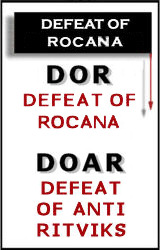
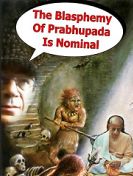
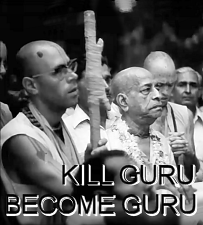
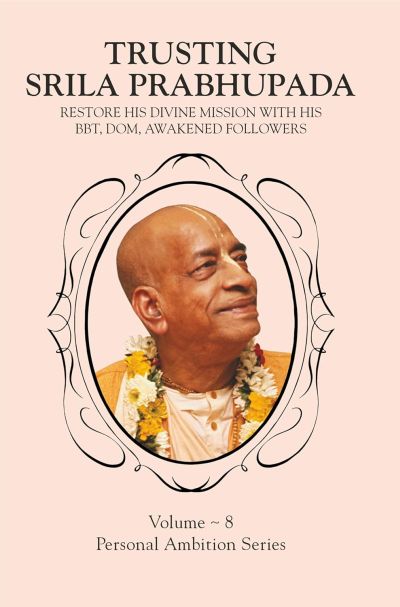
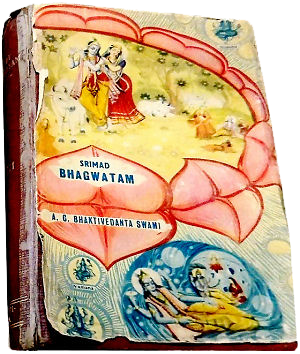
Speak Your Mind